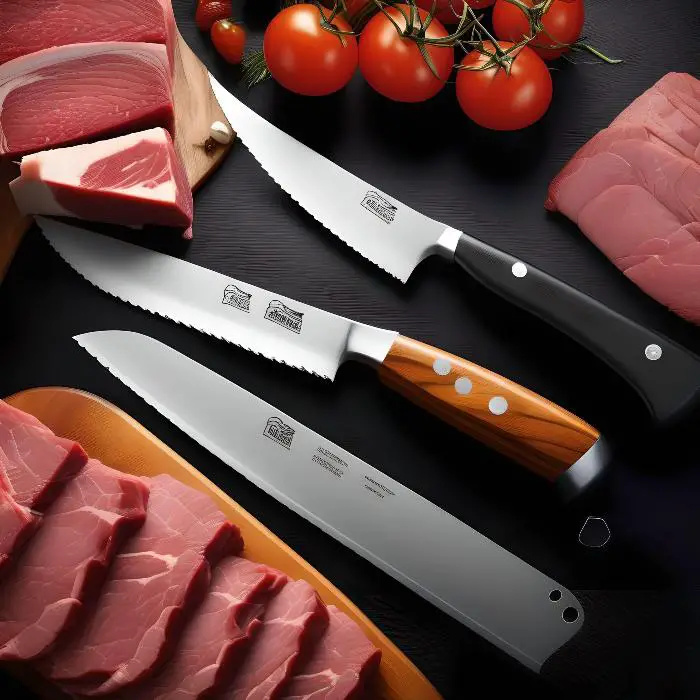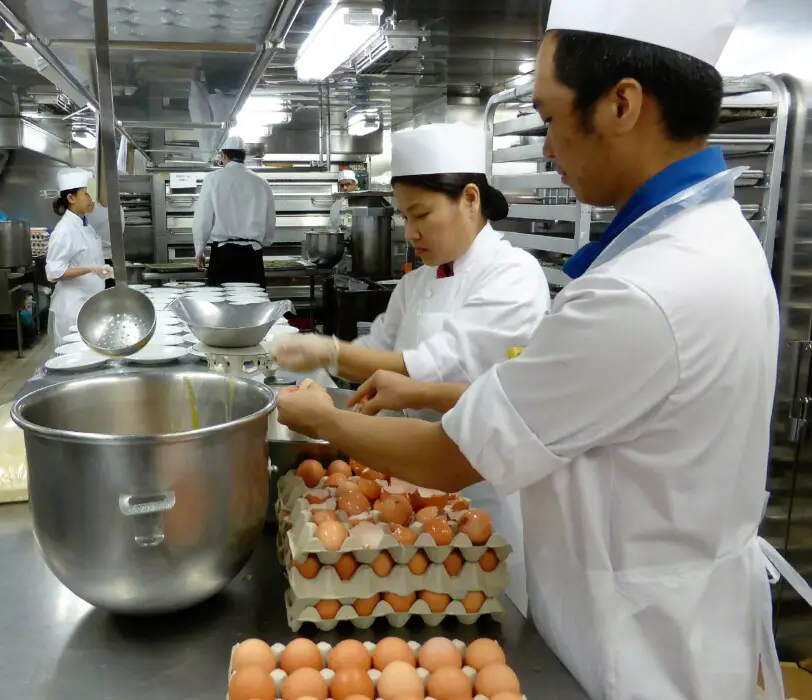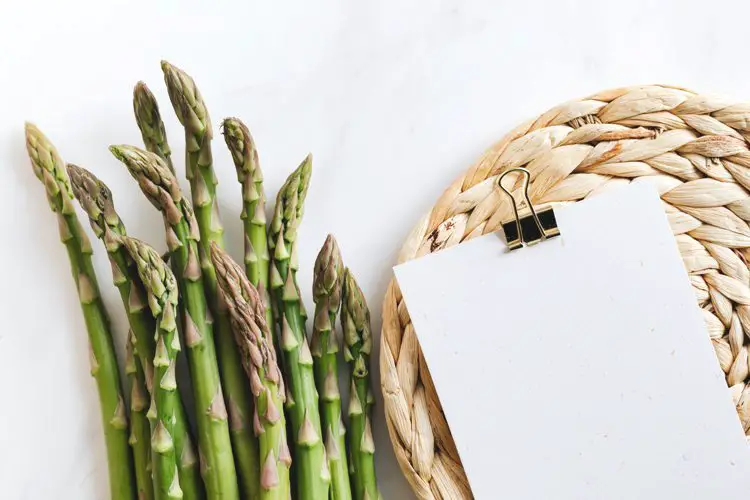
Slice beef on the cutting board and knife set.
Usage of Culinary Meat Cutting Knives
When it comes to culinary meat-cutting knives, knowing how to use them effectively can make all the difference in your kitchen endeavors.
Chef’s knives, with their versatility and precision, are a staple for any cook tackling meat preparation. Butcher knife sets, on the other hand, offer specialized tools for specific tasks like trimming and deboning.
In this section, we’ll dive into the techniques and considerations for using these knives to elevate your meat-cutting game. Let’s sharpen our skills and slice through the details.
Chef’s Knives
Unlocking the Versatility of Chef’s Knives
Chef’s knives are the workhorse of any kitchen, offering a wide range of capabilities for meat preparation. From slicing through thick cuts to finely mincing herbs, these knives can handle it all with precision.
The key to unleashing their full potential lies in understanding the grip, positioning, and cutting techniques that optimize your efficiency and safety. So, grab your chef’s knife, and let’s dive into the world of culinary precision.
Perfecting Your Grip and Positioning
To wield a chef’s knife like a pro, mastering the grip is essential. The pinch grip, where your thumb rests on one side of the blade while your fingers grip the opposite side, provides stability and control during cutting.
Additionally, positioning your non-dominant hand to hold and stabilize the meat while the knife does the cutting ensures a seamless and safe slicing experience. With a solid grip and proper positioning, you’ll be on your way to effortlessly conquering any meat-cutting task.
Mastering Cutting Techniques for Optimal Results
Chef’s knives offer a variety of cutting techniques to suit your desired outcome. Whether you’re rocking the blade back and forth for a chop or pushing it forward for a clean slice, understanding these techniques is crucial for achieving the perfect cut.
By honing your skills in the art of rocking motion cuts and push cuts, you’ll elevate your meat preparation game to a new level of finesse. So, sharpen your knife, practice those techniques, and get ready to impress with your culinary prowess.
Elevating Your Meat Cutting Game with Chef’s Knives
In the world of culinary arts, precision and efficiency are paramount, and chef’s knives are your trusty companions in achieving culinary excellence.
By mastering the grip, positioning, and cutting techniques specific to chef’s knives, you’ll not only enhance your meat-cutting skills but also ensure a safe and enjoyable cooking experience.
So, embrace the versatility of chef’s knives, sharpen your techniques, and let your culinary creativity flourish as you slice through meat with finesse.
Butcher Knife Sets
When it comes to tackling meat preparation with precision and efficiency, having the right tools at your disposal is essential.
Butcher knife sets offer a range of specialized knives designed to handle various tasks, from trimming to deboning. Each knife in a butcher knife set serves a specific purpose, ensuring that you have the right tool for the job at hand.
Let’s delve into the common knives found in a butcher knife set and explore their unique uses.
- Butcher Knife: This versatile knife features a broad blade with a pointed tip, perfect for general meat-cutting tasks such as separating joints or trimming fat.
- Boning Knife: With its narrow and flexible blade, the boning knife is ideal for precise deboning of meat, poultry, and fish, ensuring minimal waste and maximum yield.
- Cleaver: The cleaver, with its thick and heavy blade, is a powerhouse for splitting large cuts of meat and breaking through bones with ease.
- Fillet Knife: A fillet knife, equipped with a thin and flexible blade, is perfect for filleting fish, skinning poultry, or meticulously deboning delicate cuts.
Having a variety of knives in your butcher knife set allows you to tackle any meat-cutting task with confidence and precision.
Whether you’re trimming fat, deboning poultry, or splitting large cuts of meat, the right knife from your butcher knife set ensures that you can handle each task with ease and efficiency.
Remember to choose the appropriate knife for the specific task at hand, maximizing your kitchen prowess and elevating your meat-cutting game to new heights.
Maintenance of Culinary Meat Cutting Knives
Proper maintenance of your culinary meat-cutting knives is essential to ensure they perform at their best and remain safe to use. Here are some key aspects to consider:
Sharpening: Regular sharpening is crucial to maintain the sharpness of your knives. Depending on usage, sharpening can be done using a sharpening stone or a knife sharpener. Honing the knife with a honing rod in between sharpening sessions can also help keep the edge sharp.
Cleaning: Keeping your knives clean is vital to prevent bacteria buildup. Remember to wash your knives by hand with mild soap and warm water immediately after use. Avoid using harsh detergents or abrasive cleaners that can damage the blade’s finish.
Drying: After washing, ensure your knives are thoroughly dried with a clean towel to prevent moisture buildup that could lead to rusting. Proper drying also helps maintain the quality of the blade over time.
Storage: How you store your knives can impact their longevity. Consider using a magnetic knife strip mounted on a wall or a storage block with individual slots for each knife. These options protect the cutting edge and prevent accidents while keeping your knives easily accessible.
Sharpening
Sharpening is a crucial aspect of maintaining the effectiveness of your culinary meat-cutting knives. Regular sharpening is key to keeping the blades sharp and efficient in their cutting performance.
Depending on how often you use your knives and the quality of the blade, the frequency of sharpening may vary. Whether you opt for a sharpening stone or a knife sharpener, the goal remains the same: to restore the sharp edge of your knives.
Additionally, using a honing rod in between sharpening sessions can help maintain the edge and ensure optimal cutting precision.
Proper sharpening techniques can significantly impact the longevity of your knives and enhance their overall performance.
By sharpening your culinary meat-cutting knives regularly, you are not only ensuring a smooth cutting experience but also extending the lifespan of your beloved tools. It’s essential to pay attention to the angle at which you sharpen the blade, as this can affect the sharpness and durability of the edge.
Investing time in sharpening your knives will pay off in the long run, as you’ll continue to enjoy precise cuts and efficient meat preparation.
When it comes to sharpening, consistency is key. Establishing a routine for sharpening your knives can help maintain their sharpness and prevent unnecessary wear and tear.
Whether you choose to sharpen your knives weekly, bi-weekly, or monthly, finding a schedule that works for you is essential. Remember that a sharp knife is not only safer to use but also makes your cutting tasks more manageable and enjoyable.
So, take the time to sharpen your culinary meat-cutting knives regularly, and you’ll reap the benefits in your kitchen endeavors.
In conclusion, sharpening your culinary meat-cutting knives is an essential practice that should not be overlooked. By prioritizing the sharpening of your knives, you are investing in their longevity and performance.
Whether you use a sharpening stone, a knife sharpener, or a honing rod, the goal is to maintain a sharp edge for precise cuts and efficient meat preparation. Make sharpening a regular part of your kitchen routine, and you’ll elevate your culinary skills and enjoy the benefits of well-maintained knives.
Cleaning
Proper Cleaning Techniques
Maintaining cleanliness is crucial for the longevity and safety of your culinary meat-cutting knives. To ensure optimal hygiene, it’s essential to follow proper cleaning techniques. After each use, immediately wash the knives by hand with mild soap and warm water.
Avoid using harsh detergents or abrasive cleaners, as they can damage the blade’s finish. By promptly cleaning your knives, you prevent food particles from drying and sticking to the blade, thus avoiding potential contamination risks.
Drying Methods
Once you’ve cleaned your knives, it’s important to dry them thoroughly to prevent moisture buildup, which can lead to rusting. Use a clean towel to dry each knife individually, ensuring no water droplets are left behind.
Proper drying not only protects the blade but also maintains the knife’s sharpness and overall quality. By taking the time to dry your knives properly, you extend their lifespan and ensure they’re ready for your next culinary adventure.
Storage Solutions
Proper storage is key to protecting the cutting edge of your culinary meat-cutting knives and maintaining their sharpness. Consider investing in a magnetic knife strip, mounted on a wall or inside a cabinet, for safe and convenient storage.
This option keeps your knives easily accessible while also preventing damage to the cutting edge. Alternatively, a storage block with individual slots for each knife offers a secure storage solution that prevents blades from rubbing against each other and becoming dull over time.
Regular Maintenance Routine
Incorporating knife maintenance into your regular kitchen routine is essential for preserving the quality of your culinary meat-cutting knives.
After each use, promptly clean and dry the knives to prevent rust and maintain their sharpness. Additionally, schedule regular sharpening sessions to ensure your knives remain in optimal cutting condition.
By establishing a consistent maintenance routine, you not only prolong the lifespan of your knives but also enhance their performance in the kitchen.
Proactive Hygiene Practices
In addition to proper cleaning and maintenance, practicing proactive hygiene measures with your culinary meat-cutting knives is crucial for food safety. Always wash your hands before and after handling raw meat to prevent cross-contamination.
Additionally, designate specific knives for different types of meat to avoid the transfer of bacteria. By prioritizing hygiene practices and following proper cleaning procedures, you can ensure the safety of your kitchen tools and the quality of your culinary creations.
Storage
Storage
Proper storage is crucial to protect the cutting edge of culinary meat-cutting knives and prevent accidents. To ensure your knives stay sharp and safe, consider the following storage options:
- Magnetic Knife Strip: Mount a magnetic knife strip on a wall or inside a cabinet for a convenient and accessible storage solution. This keeps your knives organized and easily reachable while also preventing damage to the cutting edge.
- Storage Block: Opt for a storage block with individual slots for each knife to prevent blades from rubbing against each other and becoming dull. This method not only keeps your knives in top condition but also adds a touch of organization to your kitchen setup.
Proper storage not only prolongs the lifespan of your knives but also ensures they are ready for use whenever you need them. By investing in the right storage solution, you can maintain the sharpness and effectiveness of your culinary meat-cutting knives for years to come.
Choose a storage option that fits your kitchen layout and provides easy access to your knives while keeping them in optimal condition.
Safe Handling
When it comes to using culinary meat-cutting knives, safety should always be a top priority. Make sure to always keep your fingers away from the blade while cutting and use a cutting board to prevent any accidents. Additionally, never try to catch a falling knife – let it drop to the ground instead.
\By following these safety tips, you can prevent any unnecessary injuries and enjoy your cooking experience with peace of mind.
Conclusion
In conclusion, understanding the proper usage and maintenance of culinary meat-cutting knives is essential for any chef or home cook. Whether you’re using a versatile chef’s knife or a specialized butcher knife set, knowing how to effectively handle and care for your tools can make a world of difference in your kitchen endeavors.
By sharpening, cleaning, storing, and handling your knives with care, you can ensure their longevity and improve your meat-cutting skills. So, sharpen those blades, slice through your ingredients with precision, and elevate your culinary game to new heights. Happy cooking!
FAQ
What are the main types of culinary meat-cutting knives and how are they used?
There are two main types of culinary meat-cutting knives: Chef’s knives and Butcher knife sets. Chef’s knives are versatile and can be used for a variety of tasks like slicing, dicing, and chopping. Butcher knife sets, on the other hand, offer specialized tools for trimming, deboning, and other specific tasks.
How should I maintain my culinary meat-cutting knives?
To maintain your knives, it’s important to regularly sharpen them, clean them properly after each use, store them safely, and handle them with care to avoid damage.
What are some tips for sharpening culinary meat-cutting knives?
To sharpen your knives, you can use a sharpening stone or a honing rod. It’s important to maintain the proper angle and pressure while sharpening to ensure a sharp edge.
How should I clean my culinary meat-cutting knives?
After each use, clean your knives with warm, soapy water and dry them immediately to prevent rust. Avoid putting them in the dishwasher, as the heat and harsh detergents can damage the blades.
What are some safe handling tips for using culinary meat-cutting knives?
Always use a cutting board to protect your countertops and keep your fingers away from the blade when cutting. Make sure to use a proper grip and apply even pressure while cutting to avoid accidents.





